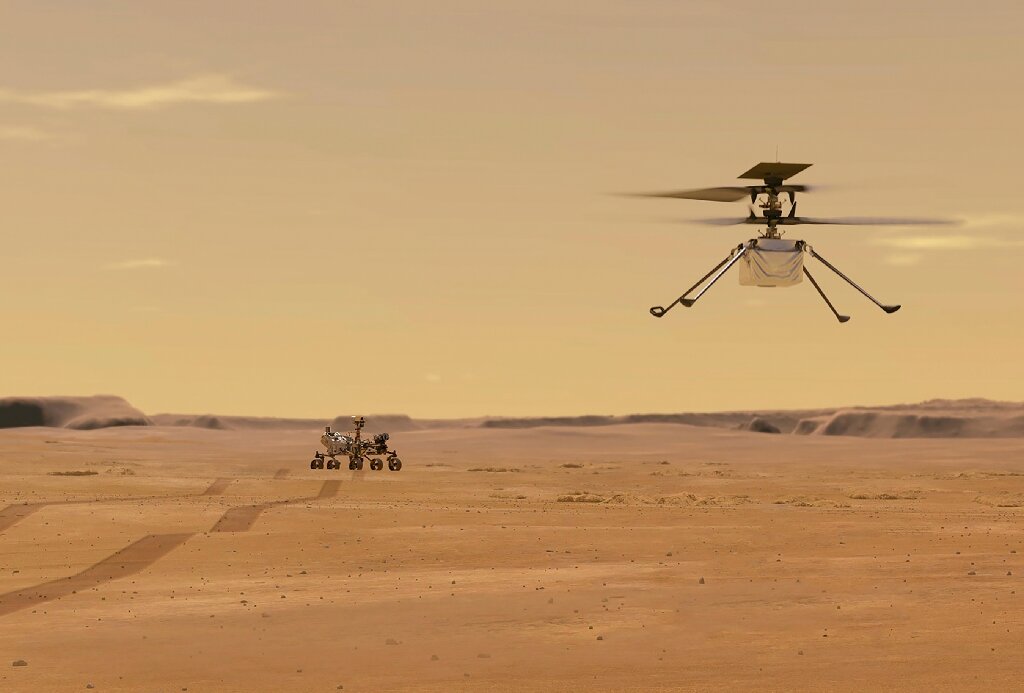On Monday, NASA was successful in flying its four-pound helicopter from the surface of Mars.
At around 3:30 a.m., the twin carbon-fiber rotor blades started rotating furiously, and the Ingenuity chopper flew off the surface of Mars, reaching an altitude of about 10 miles, where it hovered, rotated, and landed gently in a 30-second autonomous flight, according to NASA.
There was lot of excitement in the control room here back on Earth.
A red-letter day on the Red Planet! #MarsHelicopter pic.twitter.com/Qow8JwhYEo
— NASA JPL (@NASAJPL) April 19, 2021
NASA’s Jet Propulsion Laboratory in California received the data from the flight more than 3 hours after it happened. Because the data from Mars takes a long time to travel and get back to Earth because Mars is more than 178 million miles away.
“We can now say we’ve flown a rotorcraft on another planet,” MiMi Aung, NASA’s Ingenuity program manager, told the occupants of the flight control room.
During the conversation, Aung also added “We together flew on Mars. We together have our Wright brothers moment.”

According to scientists, the successful test could potentially enable the space agency to more rapidly roam Mars in search of ancient life.
To complete the brief journey, Ingenuity’s machinery had to conquer Mars’ super-thin atmosphere, which is just 1% the density of Earth’s, making it more challenging for the helicopters’ blades, which rotate at around 2,500 revolutions every minute, to produce lift.
Ingenuity, an $80 million explorer with four spindly legs and a solar panel, made the long trip to Mars tucked in the Perseverance rover’s undercarriage.
Ingenuity has a postage-sized piece of fabric from the Wright brothers’ plane, known as the Flyer, hooked to a wire under the solar panel as a tribute to the Wright brothers.
You wouldn’t believe what I just saw.
— NASA’s Perseverance Mars Rover (@NASAPersevere) April 19, 2021
More images and video to come…#MarsHelicopterhttps://t.co/PLapgbHeZU pic.twitter.com/mbiOGx4tJZ
What’s Next For Mars Helicopter?
If all goes as planned, the helicopter could make up to five flights in the coming weeks, each one more daring than the last. The second, for example, would fly somewhat higher, to 16 feet, and then horizontally for a short period of time before returning to the landing site.





